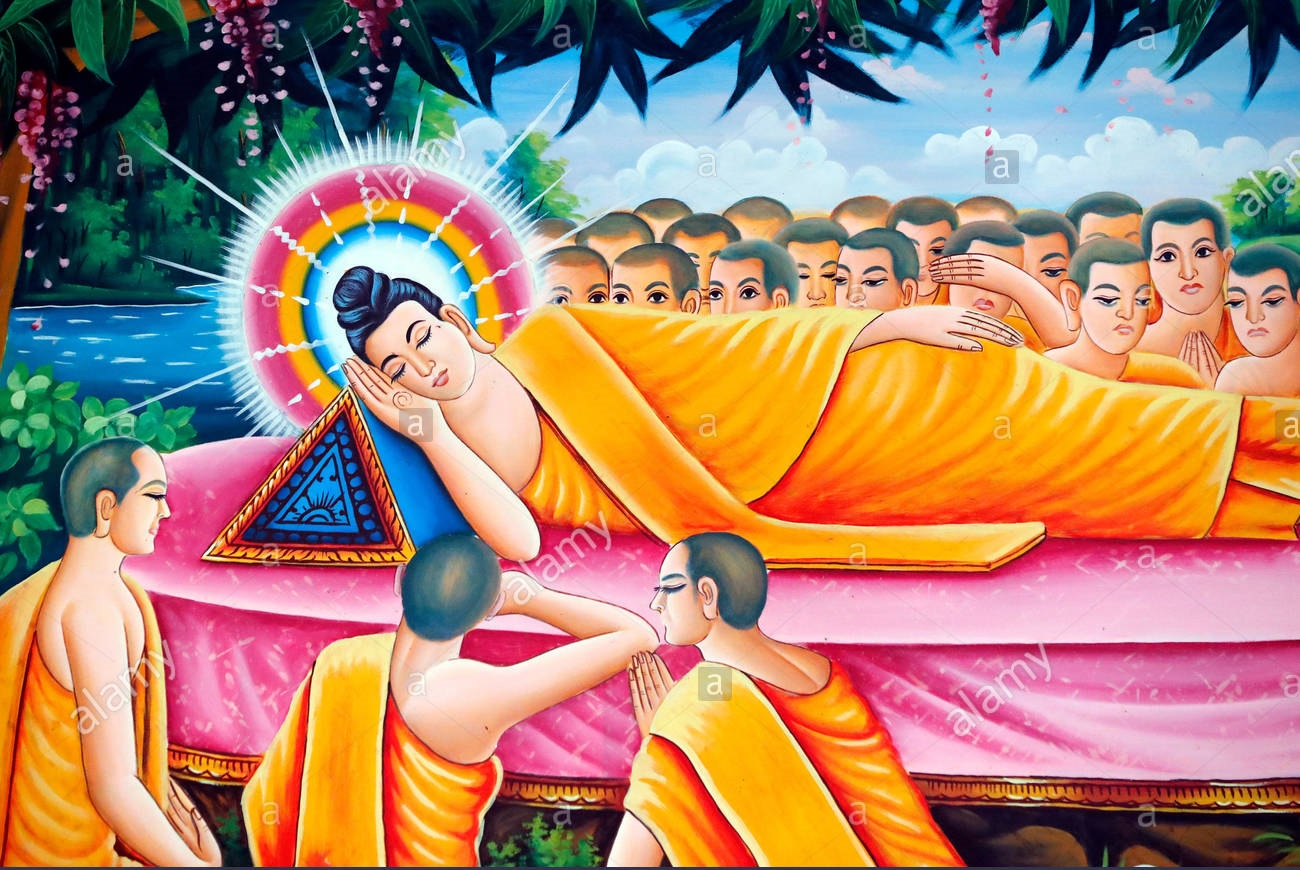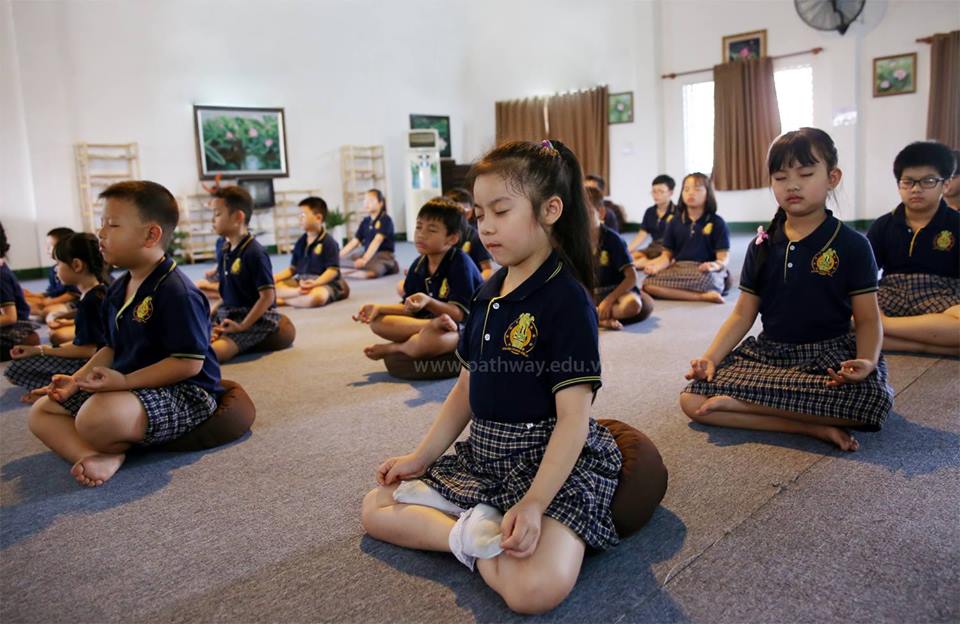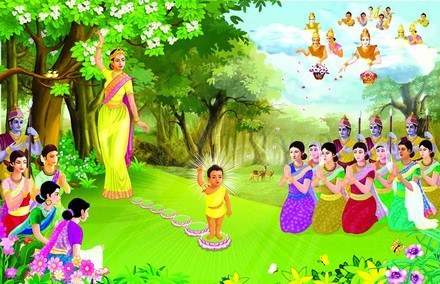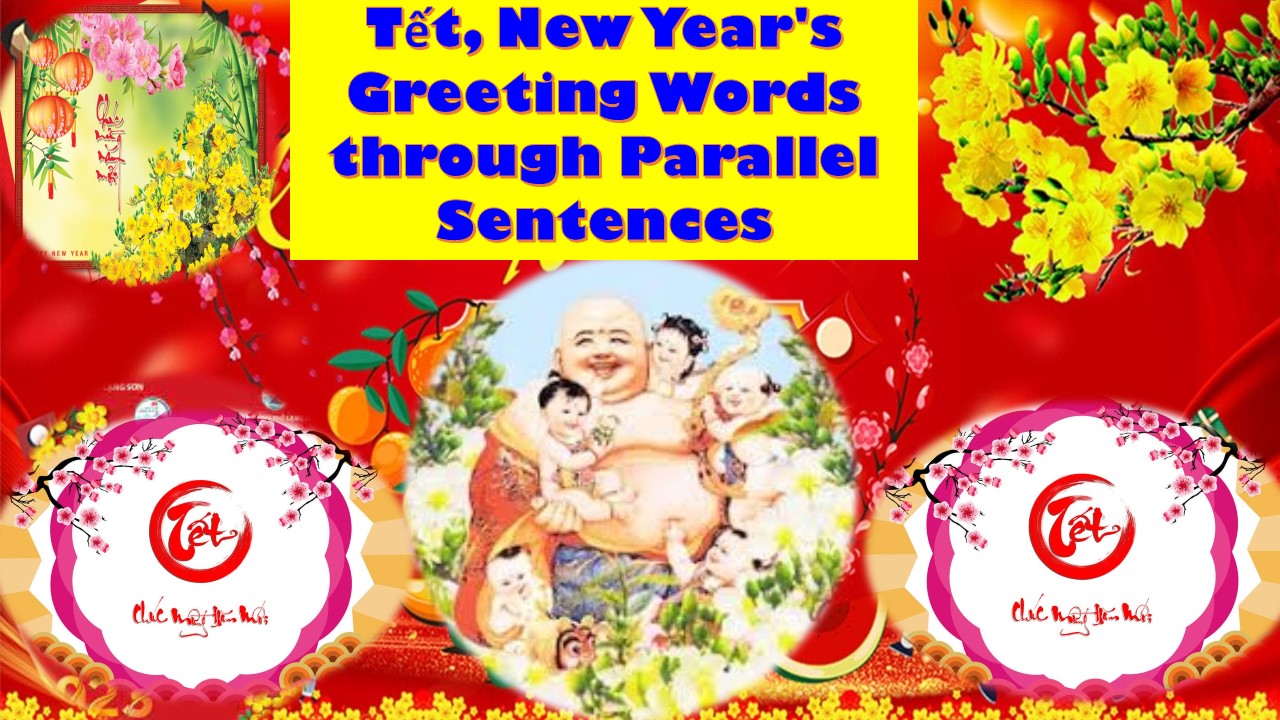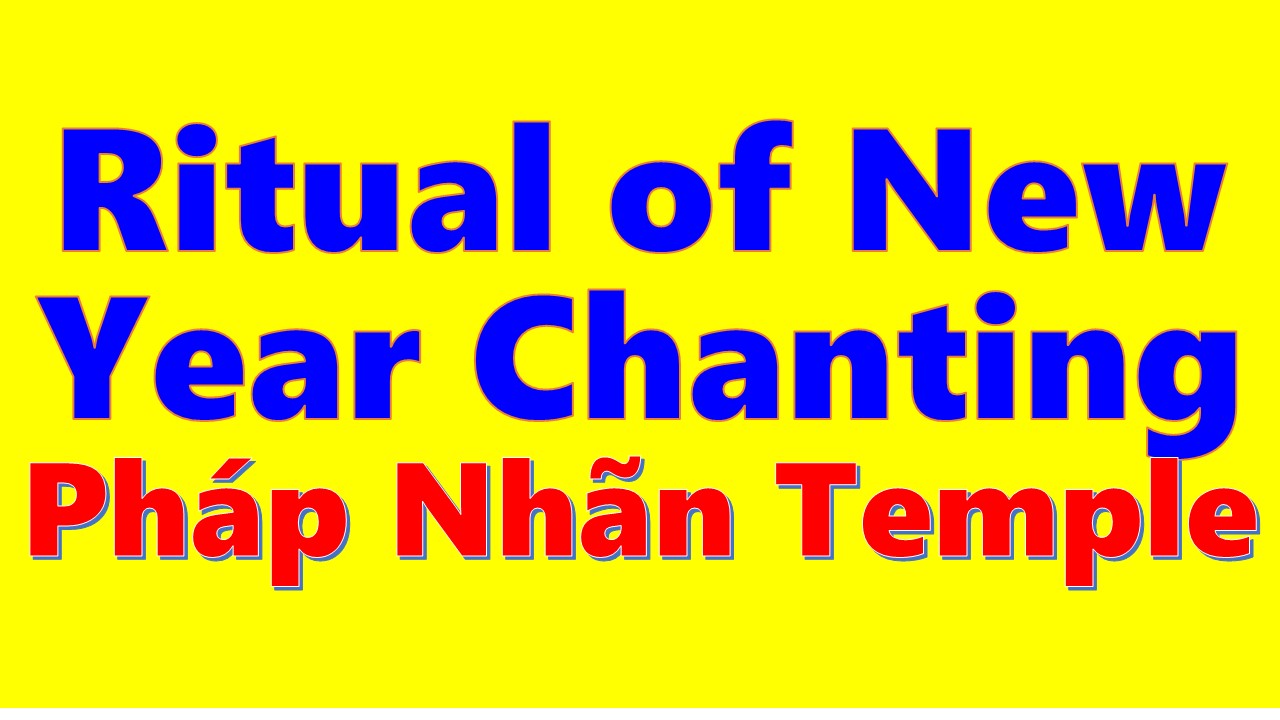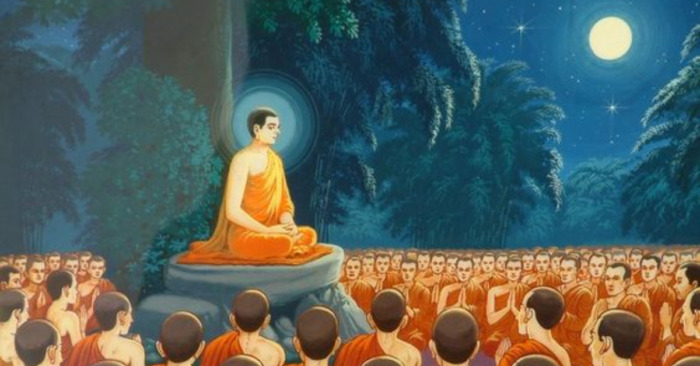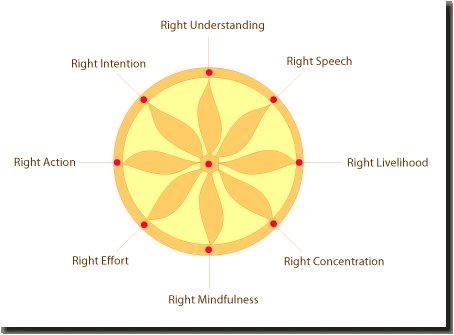
Right View (Samma Ditthi)
The eight factors of the Noble Eightfold Path are not steps to be followed in sequence, one after another. They can be more aptly described as components rather than as steps, comparable to the intertwining strands of a single cable that requires the contributions of all the strands for maximum strength. With a certain degree of progress all eight factors can be present simultaneously, each supporting the others. However, until that point is reached, some sequence in the unfolding of the path is inevitable. Considered from the standpoint of practical training, the eight path factors divide into three groups: (i) the moral discipline group (silakkhandha), made up of right speech, right action, and right livelihood; (ii) the concentration group (samadhikkhandha), made up of right effort, right mindfulness, and right concentration; and (iii) the wisdom group (pannakkhandha), made up of right view and right intention. These three groups represent three stages of training: the training in the higher moral discipline, the training in the higher consciousness, and the training in the higher wisdom.[1]
The order of the three trainings is determined by the overall aim and direction of the path. Since the final goal to which the path leads, liberation from suffering, depends ultimately on uprooting ignorance, the climax of the path must be the training directly opposed to ignorance. This is the training in wisdom, designed to awaken the faculty of penetrative understanding which sees things “as they really are.” Wisdom unfolds by degrees, but even the faintest flashes of insight presuppose as their basis a mind that has been concentrated, cleared of disturbance and distraction. Concentration is achieved through the training in the higher consciousness, the second division of the path, which brings the calm and collectedness needed to develop wisdom. But in order for the mind to be unified in concentration, a check must be placed on the unwholesome dispositions which ordinarily dominate its workings, since these dispositions disperse the beam of attention and scatter it among a multitude of concerns. The unwholesome dispositions continue to rule as long as they are permitted to gain expression through the channels of body and speech as bodily and verbal deeds. Therefore, at the very outset of training, it is necessary to restrain the faculties of action, to prevent them from becoming tools of the defilements. This task is accomplished by the first division of the path, the training in moral discipline. Thus the path evolves through its three stages, with moral discipline as the foundation for concentration, concentration the foundation for wisdom, and wisdom the direct instrument for reaching liberation.
Perplexity sometimes arises over an apparent inconsistency in the arrangement of the path factors and the threefold training. Wisdom — which includes right view and right intention — is the last stage in the threefold training, yet its factors are placed at the beginning of the path rather than at its end, as might be expected according to the canon of strict consistency. The sequence of the path factors, however, is not the result of a careless slip, but is determined by an important logistical consideration, namely, that right view and right intention of a preliminary type are called for at the outset as the spur for entering the threefold training. Right view provides the perspective for practice, right intention the sense of direction. But the two do not expire in this preparatory role. For when the mind has been refined by the training in moral discipline and concentration, it arrives at a superior right view and right intention, which now form the proper training in the higher wisdom.
Right view is the forerunner of the entire path, the guide for all the other factors. It enables us to understand our starting point, our destination, and the successive landmarks to pass as practice advances. To attempt to engage in the practice without a foundation of right view is to risk getting lost in the futility of undirected movement. Doing so might be compared to wanting to drive someplace without consulting a roadmap or listening to the suggestions of an experienced driver. One might get into the car and start to drive, but rather than approaching closer to one’s destination, one is more likely to move farther away from it. To arrive at the desired place one has to have some idea of its general direction and of the roads leading to it. Analogous considerations apply to the practice of the path, which takes place in a framework of understanding established by right view.
The importance of right view can be gauged from the fact that our perspectives on the crucial issues of reality and value have a bearing that goes beyond mere theoretical convictions. They govern our attitudes, our actions, our whole orientation to existence. Our views might not be clearly formulated in our mind; we might have only a hazy conceptual grasp of our beliefs. But whether formulated or not, expressed or maintained in silence, these views have a far-reaching influence. They structure our perceptions, order our values, crystallize into the ideational framework through which we interpret to ourselves the meaning of our being in the world.
These views then condition action. They lie behind our choices and goals, and our efforts to turn these goals from ideals into actuality. The actions themselves might determine consequences, but the actions along with their consequences hinge on the views from which they spring. Since views imply an “ontological commitment,” a decision on the question of what is real and true, it follows that views divide into two classes, right views and wrong views. The former correspond to what is real, the latter deviate from the real and confirm the false in its place. These two different kinds of views, the Buddha teaches, lead to radically disparate lines of action, and thence to opposite results. If we hold a wrong view, even if that view is vague, it will lead us towards courses of action that eventuate in suffering. On the other hand, if we adopt a right view, that view will steer us towards right action, and thereby towards freedom from suffering. Though our conceptual orientation towards the world might seem innocuous and inconsequential, when looked at closely it reveals itself to be the decisive determinant of our whole course of future development. The Buddha himself says that he sees no single factor so responsible for the arising of unwholesome states of mind as wrong view, and no factor so helpful for the arising of wholesome states of mind as right view. Again, he says that there is no single factor so responsible for the suffering of living beings as wrong view, and no factor so potent in promoting the good of living beings as right view (AN 1:16.2).
In its fullest measure right view involves a correct understanding of the entire Dhamma or teaching of the Buddha, and thus its scope is equal to the range of the Dhamma itself. But for practical purposes two kinds of right view stand out as primary. One is mundane right view, right view which operates within the confines of the world. The other is supramundane right view, the superior right view which leads to liberation from the world. The first is concerned with the laws governing material and spiritual progress within the round of becoming, with the principles that lead to higher and lower states of existence, to mundane happiness and suffering. The second is concerned with the principles essential to liberation. It does not aim merely at spiritual progress from life to life, but at emancipation from the cycle of recurring lives and deaths.
Mundane Right View
Mundane right view involves a correct grasp of the law of kamma, the moral efficacy of action. Its literal name is “right view of the ownership of action” (kammassakata sammaditthi), and it finds its standard formulation in the statement: “Beings are the owners of their actions, the heirs of their actions; they spring from their actions, are bound to their actions, and are supported by their actions. Whatever deeds they do, good or bad, of those they shall be heirs.”[2] More specific formulations have also come down in the texts. One stock passage, for example, affirms that virtuous actions such as giving and offering alms have moral significance, that good and bad deeds produce corresponding fruits, that one has a duty to serve mother and father, that there is rebirth and a world beyond the visible one, and that religious teachers of high attainment can be found who expound the truth about the world on the basis of their own superior realization.[3]
To understand the implications of this form of right view we first have to examine the meaning of its key term, kamma. The word kamma means action. For Buddhism the relevant kind of action is volitional action, deeds expressive of morally determinate volition, since it is volition that gives the action ethical significance. Thus the Buddha expressly identifies action with volition. In a discourse on the analysis of kamma he says: “Monks, it is volition that I call action (kamma). Having willed, one performs an action through body, speech, or mind.”[4] The identification of kamma with volition makes kamma essentially a mental event, a factor originating in the mind which seeks to actualize the mind’s drives, dispositions, and purposes. Volition comes into being through any of three channels — body, speech, or mind — called the three doors of action (kammadvara). A volition expressed through the body is a bodily action; a volition expressed through speech is a verbal action; and a volition that issues in thoughts, plans, ideas, and other mental states without gaining outer expression is a mental action. Thus the one factor of volition differentiates into three types of kamma according to the channel through which it becomes manifest.
Right view requires more than a simple knowledge of the general meaning of kamma. It is also necessary to understand: (i) the ethical distinction of kamma into the unwholesome and the wholesome; (ii) the principal cases of each type; and (iii) the roots from which these actions spring. As expressed in a sutta: “When a noble disciple understands what is kammically unwholesome, and the root of unwholesome kamma, what is kammically wholesome, and the root of wholesome kamma, then he has right view.”[5]
(i) Taking these points in order, we find that kamma is first distinguished as unwholesome (akusala) and wholesome (kusala). Unwholesome kamma is action that is morally blameworthy, detrimental to spiritual development, and conducive to suffering for oneself and others. Wholesome kamma, on the other hand, is action that is morally commendable, helpful to spiritual growth, and productive of benefits for oneself and others.
(ii) Innumerable instances of unwholesome and wholesome kamma can be cited, but the Buddha selects ten of each as primary. These he calls the ten courses of unwholesome and wholesome action. Among the ten in the two sets, three are bodily, four are verbal, and three are mental. The ten courses of unwholesome kamma may be listed as follows, divided by way of their doors of expression:
1. Destroying life
2. Taking what is not given
3. Wrong conduct in regard to sense pleasures
4. False speech
5. Slanderous speech Verbal action
6. Harsh speech (vacikamma)
7. Idle chatter
8. Covetousness
9. Ill will
10. Wrong view
The ten courses of wholesome kamma are the opposites of these: abstaining from the first seven courses of unwholesome kamma, being free from covetousness and ill will, and holding right view. Though the seven cases of abstinence are exercised entirely by the mind and do not necessarily entail overt action, they are still designated wholesome bodily and verbal action because they centre on the control of the faculties of body and speech.
(iii) Actions are distinguished as wholesome and unwholesome on the basis of their underlying motives, called “roots” (mula), which impart their moral quality to the volitions concomitant with themselves. Thus kamma is wholesome or unwholesome according to whether its roots are wholesome or unwholesome. The roots are threefold for each set. The unwholesome roots are the three defilements we already mentioned — greed, aversion, and delusion. Any action originating from these is an unwholesome kamma. The three wholesome roots are their opposites, expressed negatively in the old Indian fashion as non-greed (alobha), non-aversion (adosa), and non-delusion (amoha). Though these are negatively designated, they signify not merely the absence of defilements but the corresponding virtues. Non-greed implies renunciation, detachment, and generosity; non-aversion implies loving-kindness, sympathy, and gentleness; and non-delusion implies wisdom. Any action originating from these roots is a wholesome kamma.
The most important feature of kamma is its capacity to produce results corresponding to the ethical quality of the action. An immanent universal law holds sway over volitional actions, bringing it about that these actions issue in retributive consequences, called vipaka, “ripenings,” or phala, “fruits.” The law connecting actions with their fruits works on the simple principle that unwholesome actions ripen in suffering, wholesome actions in happiness. The ripening need not come right away; it need not come in the present life at all. Kamma can operate across the succession of lifetimes; it can even remain dormant for aeons into the future. But whenever we perform a volitional action, the volition leaves its imprint on the mental continuum, where it remains as a stored up potency. When the stored up kamma meets with conditions favourable to its maturation, it awakens from its dormant state and triggers off some effect that brings due compensation for the original action. The ripening may take place in the present life, in the next life, or in some life subsequent to the next. A kamma may ripen by producing rebirth into the next existence, thus determining the basic form of life; or it may ripen in the course of a lifetime, issuing in our varied experiences of happiness and pain, success and failure, progress and decline. But whenever it ripens and in whatever way, the same principle invariably holds: wholesome actions yield favourable results, unwholesome actions yield unfavourable results.
To recognize this principle is to hold right view of the mundane kind. This view at once excludes the multiple forms of wrong view with which it is incompatible. As it affirms that our actions have an influence on our destiny continuing into future lives, it opposes the nihilistic view which regards this life as our only existence and holds that consciousness terminates with death. As it grounds the distinction between good and evil, right and wrong, in an objective universal principle, it opposes the ethical subjectivism which asserts that good and evil are only postulations of personal opinion or means to social control. As it affirms that people can choose their actions freely, within limits set by their conditions, it opposes the “hard deterministic” line that our choices are always made subject to necessitation, and hence that free volition is unreal and moral responsibility untenable.
Some of the implications of the Buddha’s teaching on the right view of kamma and its fruits run counter to popular trends in present-day thought, and it is helpful to make these differences explicit. The teaching on right view makes it known that good and bad, right and wrong, transcend conventional opinions about what is good and bad, what is right and wrong. An entire society may be predicated upon a confusion of correct moral values, and even though everyone within that society may applaud one particular kind of action as right and condemn another kind as wrong, this does not make them validly right and wrong. For the Buddha moral standards are objective and invariable. While the moral character of deeds is doubtlessly conditioned by the circumstances under which they are performed, there are objective criteria of morality against which any action, or any comprehensive moral code, can be evaluated. This objective standard of morality is integral to the Dhamma, the cosmic law of truth and righteousness. Its transpersonal ground of validation is the fact that deeds, as expressions of the volitions that engender them, produce consequences for the agent, and that the correlations between deeds and their consequences are intrinsic to the volitions themselves. There is no divine judge standing above the cosmic process who assigns rewards and punishments. Nevertheless, the deeds themselves, through their inherent moral or immoral nature, generate the appropriate results.
For most people, the vast majority, the right view of kamma and its results is held out of confidence, accepted on faith from an eminent spiritual teacher who proclaims the moral efficacy of action. But even when the principle of kamma is not personally seen, it still remains a facet of right view. It is part and parcel of right view because right view is concerned with understanding — with understanding our place in the total scheme of things — and one who accepts the principle that our volitional actions possess a moral potency has, to that extent, grasped an important fact pertaining to the nature of our existence. However, the right view of the kammic efficacy of action need not remain exclusively an article of belief screened behind an impenetrable barrier. It can become a matter of direct seeing. Through the attainment of certain states of deep concentration it is possible to develop a special faculty called the “divine eye” (dibbacakkhu), a super-sensory power of vision that reveals things hidden from the eyes of flesh. When this faculty is developed, it can be directed out upon the world of living beings to investigate the workings of the kammic law. With the special vision it confers one can then see for oneself, with immediate perception, how beings pass away and re-arise according to their kamma, how they meet happiness and suffering through the maturation of their good and evil deeds.[6]
Superior Right View
The right view of kamma and its fruits provides a rationale for engaging in wholesome actions and attaining high status within the round of rebirths, but by itself it does not lead to liberation. It is possible for someone to accept the law of kamma yet still limit his aims to mundane achievements. One’s motive for performing noble deeds might be the accumulation of meritorious kamma leading to prosperity and success here and now, a fortunate rebirth as a human being, or the enjoyment of celestial bliss in the heavenly worlds. There is nothing within the logic of kammic causality to impel the urge to transcend the cycle of kamma and its fruit. The impulse to deliverance from the entire round of becoming depends upon the acquisition of a different and deeper perspective, one which yields insight into the inherent defectiveness of all forms of samsaric existence, even the most exalted.
This superior right view leading to liberation is the understanding of the Four Noble Truths. It is this right view that figures as the first factor of the Noble Eightfold Path in the proper sense: as the noble right view. Thus the Buddha defines the path factor of right view expressly in terms of the four truths: “What now is right view? It is understanding of suffering (dukkha), understanding of the origin of suffering, understanding of the cessation of suffering, understanding of the way leading to the cessation to suffering.”[7] The Eightfold Path starts with a conceptual understanding of the Four Noble Truths apprehended only obscurely through the media of thought and reflection. It reaches its climax in a direct intuition of those same truths, penetrated with a clarity tantamount to enlightenment. Thus it can be said that the right view of the Four Noble Truths forms both the beginning and the culmination of the way to the end of suffering.
The first noble truth is the truth of suffering (dukkha), the inherent unsatisfactoriness of existence, revealed in the impermanence, pain, and perpetual incompleteness intrinsic to all forms of life.
This is the noble truth of suffering. Birth is suffering; aging is suffering; sickness is suffering; death is suffering; sorrow, lamentation, pain, grief, and despair are suffering; association with the unpleasant is suffering; separation from the pleasant is suffering; not to get what one wants is suffering; in brief, the five aggregates of clinging are suffering.[8]
The last statement makes a comprehensive claim that calls for some attention. The five aggregates of clinging (pancupadanakkandha) are a classificatory scheme for understanding the nature of our being. What we are, the Buddha teaches, is a set of five aggregates — material form, feelings, perceptions, mental formations, and consciousness — all connected with clinging. We are the five and the five are us. Whatever we identify with, whatever we hold to as our self, falls within the set of five aggregates. Together these five aggregates generate the whole array of thoughts, emotions, ideas, and dispositions in which we dwell, “our world.” Thus the Buddha’s declaration that the five aggregates are dukkha in effect brings all experience, our entire existence, into the range of dukkha.
But here the question arises: Why should the Buddha say that the five aggregates are dukkha? The reason he says that the five aggregates are dukkha is that they are impermanent. They change from moment to moment, arise and fall away, without anything substantial behind them persisting through the change. Since the constituent factors of our being are always changing, utterly devoid of a permanent core, there is nothing we can cling to in them as a basis for security. There is only a constantly disintegrating flux which, when clung to in the desire for permanence, brings a plunge into suffering.
The second noble truth points out the cause of dukkha. From the set of defilements which eventuate in suffering, the Buddha singles out craving (tanha) as the dominant and most pervasive cause, “the origin of suffering.”
This is the noble truth of the origin of suffering. It is this craving which produces repeated existence, is bound up with delight and lust, and seeks pleasure here and there, namely, craving for sense pleasures, craving for existence, and craving for non-existence.[9]
The third noble truth simply reverses this relationship of origination. If craving is the cause of dukkha, then to be free from dukkha we have to eliminate craving. Thus the Buddha says:
This is the noble truth of the cessation of suffering. It is the complete fading away and cessation of this craving, its forsaking and abandonment, liberation and detachment from it.[10]
The state of perfect peace that comes when craving is eliminated is Nibbana (nirvana), the unconditioned state experienced while alive with the extinguishing of the flames of greed, aversion, and delusion. The fourth noble truth shows the way to reach the end of dukkha, the way to the realization of Nibbana. That way is the Noble Eightfold Path itself.
The right view of the Four Noble Truths develops in two stages. The first is called the right view that accords with the truths (saccanulomika samma ditthi); the second, the right view that penetrates the truths (saccapativedha samma ditthi). To acquire the right view that accords with the truths requires a clear understanding of their meaning and significance in our lives. Such an understanding arises first by learning the truths and studying them. Subsequently it is deepened by reflecting upon them in the light of experience until one gains a strong conviction as to their veracity.
But even at this point the truths have not been penetrated, and thus the understanding achieved is still defective, a matter of concept rather than perception. To arrive at the experiential realization of the truths it is necessary to take up the practice of meditation — first to strengthen the capacity for sustained concentration, then to develop insight. Insight arises by contemplating the five aggregates, the factors of existence, in order to discern their real characteristics. At the climax of such contemplation the mental eye turns away from the conditioned phenomena comprised in the aggregates and shifts its focus to the unconditioned state, Nibbana, which becomes accessible through the deepened faculty of insight. With this shift, when the mind’s eye sees Nibbana, there takes place a simultaneous penetration of all Four Noble Truths. By seeing Nibbana, the state beyond dukkha, one gains a perspective from which to view the five aggregates and see that they are dukkha simply because they are conditioned, subject to ceaseless change. At the same moment Nibbana is realized, craving stops; the understanding then dawns that craving is the true origin of dukkha. When Nibbana is seen, it is realized to be the state of peace, free from the turmoil of becoming. And because this experience has been reached by practising the Noble Eightfold Path, one knows for oneself that the Noble Eightfold Path is truly the way to the end of dukkha.
This right view that penetrates the Four Noble Truths comes at the end of the path, not at the beginning. We have to start with the right view conforming to the truths, acquired through learning and fortified through reflection. This view inspires us to take up the practice, to embark on the threefold training in moral discipline, concentration, and wisdom. When the training matures, the eye of wisdom opens by itself, penetrating the truths and freeing the mind from bondage.
Notes
1. Adhisilasikkha, adhicittasikkha, adhipannasikkha.
2. AN 3:33; Word of the Buddha, p. 19.
3. MN 117; Word of the Buddha, p. 36.
4. AN 6:63; Word of the Buddha, p. 19.
5. MN 9; Word of the Buddha, p. 29.
6. See DN 2, MN 27, etc. For details, see Vism. XIII, 72-101.
7. DN 22; Word of the Buddha, p. 29.
8. DN 22, SN 56:11; Word of the Buddha, p. 3
9. Ibid. Word of the Buddha, p. 16.
10. Ibid. Word of the Buddha, p. 22.



